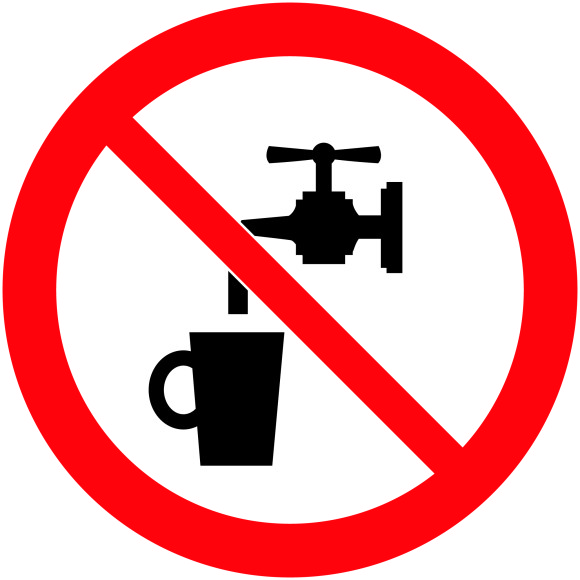Groups representing municipalities and businesses are trying to put the brakes on New Hampshire’s efforts to impose some of the nation’s toughest drinking water standards for a class of toxic chemicals that have caused widespread contamination in the state.
Last month, the Department of Environmental Services filed a proposal to set maximum levels for several compounds known as per- and polyfluoroalykyl substances, collectively called PFAS. New Hampshire is proposing a maximum of 12 parts per trillion for one of the contaminants called PFOA and 15 parts per trillion for another called PFOS.
Those limits would be one of the toughest regulations of the chemicals in the country, though other states are also moving to impose standards.
The substances, widely used in firefighting foam, nonstick cookware and other products, have been dubbed “forever chemicals” because they persist so long in the environment. Studies have found potential links between high levels in the body of one form of the contaminants and a range of illnesses, including kidney cancer, increased cholesterol levels and problems in pregnancies.
But officials from towns across New Hampshire are worried about how they are going to comply with the proposed standards, and others question why the limits are so low when there remains a debate on the dangers of these chemicals.
The Business and Industry Association in New Hampshire is calling for a legislative rules committee to put off consideration of the new standards until at least August, noting that the effects of changing the standard would be “widespread.” The standards are supposed to take effect Oct. 1.
The state estimates it could cost as much as $190 million for communities to ensure their landfills as well as systems that treat wastewater and provide drinking water comply with the new standards. For some, that will be simply testing to confirm they meet standards. But for others who test above the standards, it could mean expensive upgrades, including building new treatment facilities in the coming years.
“I was pretty surprised when the standards were released,” said Barbara Reid, the government finance adviser for the New Hampshire Municipal Association who expects the group’s members to express their concerns when a legislative committee takes up the issue later this month. If approved, they would apply to public water systems that serve the same 25 people at least 60 days per year.
“Is the expectation that it will be property taxpayers and water and sewer rate payers who will be financing the compliance with these new standards?” Reid asked. “Without anything in place, how are we going to pay for this? That is a significant financial burden that is being squarely placed on the municipalities to fund.”
Department of Environmental Services Assistant Commissioner Clark Freise said there was more than $30 million in two state funds that could go to helping communities meet the standards and another $6 million in the proposed state budget to address the issue. But Friese acknowledged meeting the standards will come with a cost to some communities, even if that is over several years.
“We think it’s essential to get the level of exposure to these compounds down to be protective of public health,” Freise said. “For some municipalities, it could have a significant impact. No one is disputing that.”
More than 700 homes in New Hampshire whose drinking water was contaminated by the toxic chemicals have been connected to new water systems in four communities, and the state estimates more than 100,000 people eventually could be impacted. The contamination is the result of the chemicals leaking into groundwater from industrial facilities like Saint-Gobain Performance Plastics as well as from the former Pease Air Force base.
Currently, New Hampshire follows the guidance from the federal government, which has a nonbinding health threshold of 70 parts per trillion for two forms of the contaminant.
It’s not alone in moving toward a stricter standard. New Jersey has set standards at 13 and 14 parts per trillion for PFOA and PFOS, respectively, while scientists advising the state of Michigan have suggested limits of 8 parts per trillion for the first one and 16 parts per trillion for the second.
The state has also sued eight companies including 3M and Dupont for damage it says has been caused by the chemicals. It is hoping an award in that suit would help pay for investigating, cleaning up and remediating the contamination.
Responding to the New Hampshire lawsuit, 3M said it “acted responsibly in connection with products containing PFAS” and would “vigorously defend its environmental stewardship.” DuPont said it doesn’t comment on pending litigation but would also defend its record.
Supporters of the new standards praised the state for taking up the issue and said the limits would ensure public sources of drinking water are safe.
“PFAS can cause harm at very low levels, and it is critical we have standards in New Hampshire that protect public health,” Andrea Amico, who helped found a group to raise awareness about the chemicals after high levels were found in the drinking water at the former Pease Air Force base.
Topics Pollution
Was this article valuable?
Here are more articles you may enjoy.



 Warburg Mulls $1 Billion Sale of London Insurance Broker McGill
Warburg Mulls $1 Billion Sale of London Insurance Broker McGill  New York Governor Hochul Vows to Tackle Insurance Affordability, Litigation and Fraud
New York Governor Hochul Vows to Tackle Insurance Affordability, Litigation and Fraud  Adjusters Launch ‘CarFax for Insurance Claims’ to Vet Carriers’ Damage Estimates
Adjusters Launch ‘CarFax for Insurance Claims’ to Vet Carriers’ Damage Estimates  Experian: AI Agents Could Overtake Human Error as Major Cause of Data Breaches
Experian: AI Agents Could Overtake Human Error as Major Cause of Data Breaches 

